
20 Relaxing Bath Recipes to Ease Your Stress in 2026
Baths provide a unique opportunity to relieve stress and soothe your body. Bath recipes are designed to promote health benefits
Freestanding bathtubs and built-in bathtubs have always enjoyed a steady rivalry for those that are looking for the right bathtub. Freestanding bathtubs offer an aesthetically pleasing bathtub that is easy to clean and can be placed anywhere in the bathroom, although they are more complicated to install and much heavier. Built-in bathtubs, on the other hand, possess less of that classic vintage draw, but are much easier to install and much more affordable. So let us see which is the right pick for your bathroom.
A freestanding bathtub is a bathtub that can stand on its own without any additional supports or anchors. These tend to be quite large in shape compared to drop-in bathtubs, with the discernible difference that they have no handholds and are finished across all sides, making them smooth, which helps in their installation process. This design allows a freestanding bathtub to be installed anywhere in bath space.
A built in bathtub or drop-in, is a bathtub that is finished on all sides, allowing it to be installed in a carved out ingress or platform. Unlike a freestanding bathtub, built-in bathtubs are confined by where the ingress or platform is located, making it more limited in terms of installation location. The benefit of this is that drop-in bathtubs tend to be much lighter, making them easier to install compared to freestanding bathtubs.
If you’re interested in getting a freestanding bathtub for your home, these are the benefits you can expect from it: Freestanding bathtubs offer a unique aesthetic that can enhance the overall design of your bathroom, making it a focal point. Additionally, heated freestanding bathtub benefits include providing a soothing and warm bathing experience, which can be particularly relaxing after a long day. You’ll also find that these tubs often have ample space, allowing for a more luxurious soak. Freestanding bathtubs can serve as a stunning focal point in your bathroom, enhancing the overall aesthetic of your space. Furthermore, they offer ample room for a relaxing soak, which can be a therapeutic escape from daily stress. However, it’s essential to consider the freestanding bathtub pros and cons to ensure it fits well with your lifestyle and home design. A freestanding bathtub can serve as a stunning centerpiece in your bathroom, elevating the overall aesthetic while providing a luxurious space for relaxation. Additionally, they often come in various styles and materials, allowing you to select one that complements your home’s decor. For those unsure where to start, consider these tips for choosing a bathtub to ensure you find the perfect fit for your needs and preferences.
When it comes to discussing freestanding bathtubs and built-in bathtubs, there are quite a few differences between the two. The principal of which is their installation method, where freestanding bathtubs can be placed anywhere in your bathroom whereas built-in or drop-in bathtubs require a previously carved out and cleaned space. Freestanding bathtubs also tend to be quite large in size whereas drop-in tubs are smaller, giving them more flexibility in terms of install.
When discussing cost, freestanding bathtubs are generally more expensive than built-in bathtubs. This is due to their larger size and the additional material used to make them. Installation costs are also included in this estimation as installing a freestanding bathtub is generally more expensive than a built-in bathtub. Finally, through general use, freestanding bathtubs, unless paired with a shower combo, will invariably use more water, increasing their maintenance and cost even further. Additionally, a freestanding tub cost analysis should consider the long-term investment in terms of style and functionality, as these tubs often serve as a luxurious centerpiece in a bathroom. Homebuyers tend to appreciate the aesthetic appeal of freestanding tubs, potentially increasing the property’s value. However, it’s essential to weigh these benefits against the higher upfront costs and ongoing water usage.
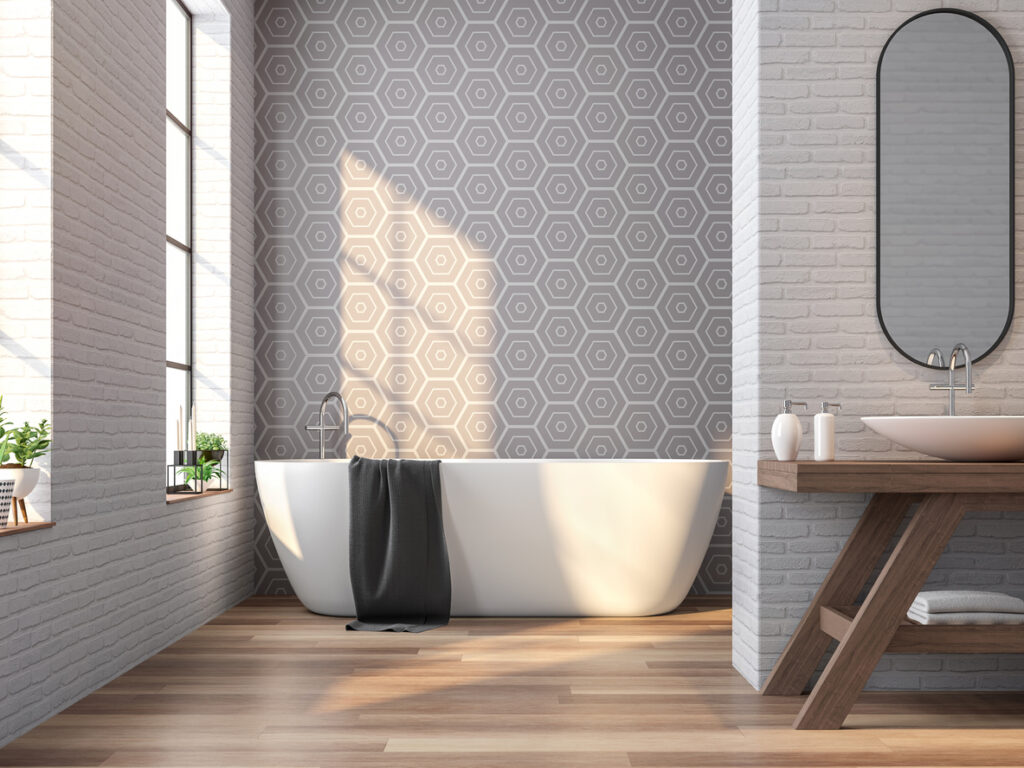
From a size perspective, freestanding bathtubs are generally much larger than built-in bathtubs. Built-in bathtubs are generally more compact as they must be finished on all sizes so they can be installed in your prepared space. But another thing to consider is that freestanding bathtubs don’t require walls and tub surround to be installed, giving them additional freedom to be placed anywhere in your bathroom. So from a pure space perspective, depending on the size of your bathroom, you may save more space using a freestanding bathtub compared to a built-in tub.
The plumbing for freestanding bathtubs is relatively simple: you simply find a line to your plumbing and make sure your bathtub is connected to the in and outflow of your water. Since this style of bathtub can be placed anywhere, you have a great deal of freedom in determining where your plumbing is placed. For built-in bathtubs, you will need to configure your pipes to align with your walls or alcove so that your built-in bathtub can be placed.
For shower tub combos, both freestanding and built-in bathtubs can be fitted with a shower. For built-in bathtubs, a shower attachment can be fitted to the wall of your shower, giving you the benefit of both a bathtub and a shower. For freestanding bathtubs, an exterior shower nozzle can be purchased and fitted on your bathtub, and the addition of curtains can give you some added privacy to your shower.
For the purposes of redesign or moving, freestanding bathtubs tend to win in this comparison. They tend to be quite large, but sturdy overall, meaning they can be moved around much easier than a built-in bathtub which is anchored or secured to your wall or a platform. Of course, you can simply demolish the area around it and move the bathtub afterwards, but it is a great deal messier than just moving a bathtub which is the benefit of a freestanding bathtub.
For built-in bathtubs, since they tend to be anchored near walls, they have a wider option of bathtub accessories available to them such as bathtub trays, shower caddies and other storage compartments that can be placed along the wall. Freestanding bathtubs can also be installed with a tray for bathing supplies, but it will have to be removed after bathing to ensure the water does not erode the material itself.
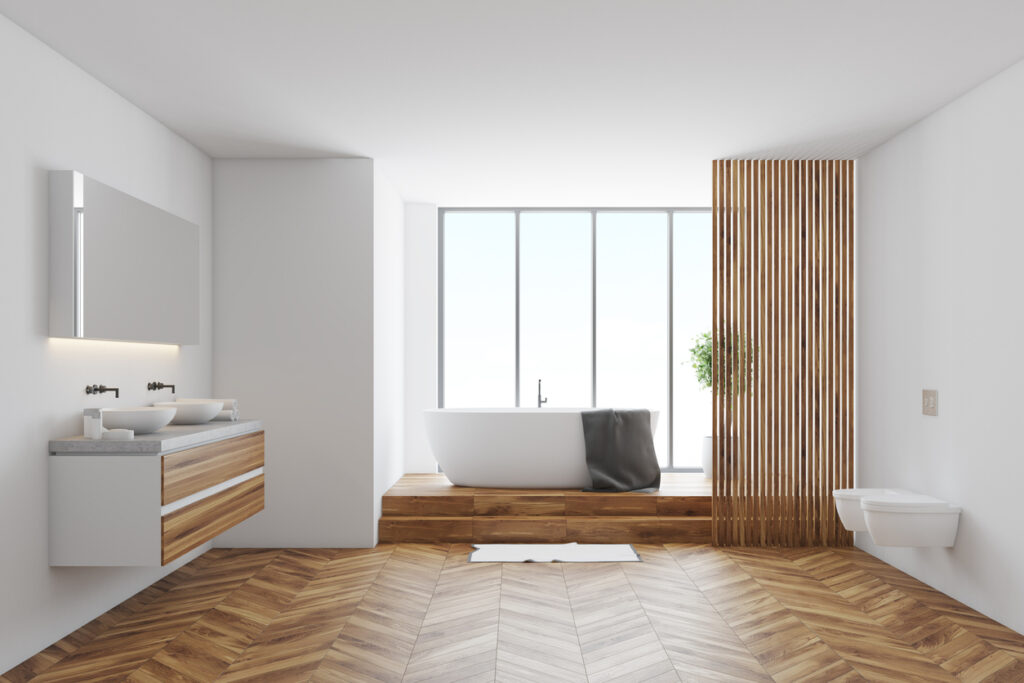
Freestanding bathtubs have always been a popular choice due to their classic and vintage appeal. That being said, drop-in bathtubs have dominated much of the market due to their ease of installation and affordability. This trend is likely to continue, but for those that can afford it, freestanding bathtubs offer an aesthetic level of comfort that is hard to beat.
For most people, freestanding bathtubs tend to be more vintage in appearance, with styles such as clawfoot tubs, whereas drop-in bathtubs retain a more modern feel with their sleeker designs. However, there has been a rise of newer styles of freestanding bathtubs that are more modern in appearance, with a wide array of colors that rival the sleek edges of drop-in bathtubs today.
In terms of storage, drop-in bathtubs are easier to store due to their relatively small size. Freestanding bathtubs tend to be much larger, though there are smaller models available or soaking styles that take up less space. But in general, if you are looking for a model to store away, drop-in bathtubs are much more friendly towards your storage space.
Freestanding bathtubs are afforded the luxury of being installed anywhere in your bathtub so long as it has access to your pipe system. However, this luxury also means that installation for freestanding bathtubs can be quite difficult without assistance as they can be quite a great deal heavier than built in bathtubs. Built-in bathtubs on the other hand, are much easier to install as they tend to be quite a great deal smaller, making them lighter than freestanding tubs and simply need to placed in a carved out ingress or raised platform. The drawback to this however is that built-in tubs need to be placed near walls or a platform, limiting their potential space compared to freestanding tubs.
When it comes to assisting the elderly, built in bathtubs have the advantage of being installed in a location that can be fitted with grips or handholds. Many drop in bathtubs have platforms and steps that provide solid footing for entry alongside usually being adjacent to walls so they can provide additional grip. Freestanding bathtubs do not have these features and the standard freestanding bathtub is not very friendly towards the disabled or elderly with much of their surfaces being very smooth, leading to increased risk of falling or injury. This can be amended by adding extra grips and handholds on the side of your bathtub for increased support.
Freestanding bathtubs and built-in bathtubs both have their positives and negatives, but no one can understate their importance and attractiveness in any bathroom. Regardless of which you bathtub is right for you, either style will make your bathroom feel like home.

Eric is the founder and president of Badeloft USA. He has been the president of Badeloft’s US division for over ten years and oversees all marketing and branding aspects of Badeloftusa.com.
His expertise lies in small business development, sales, and home and bathroom industry trends and information.
Contact us with any business related inquiries.
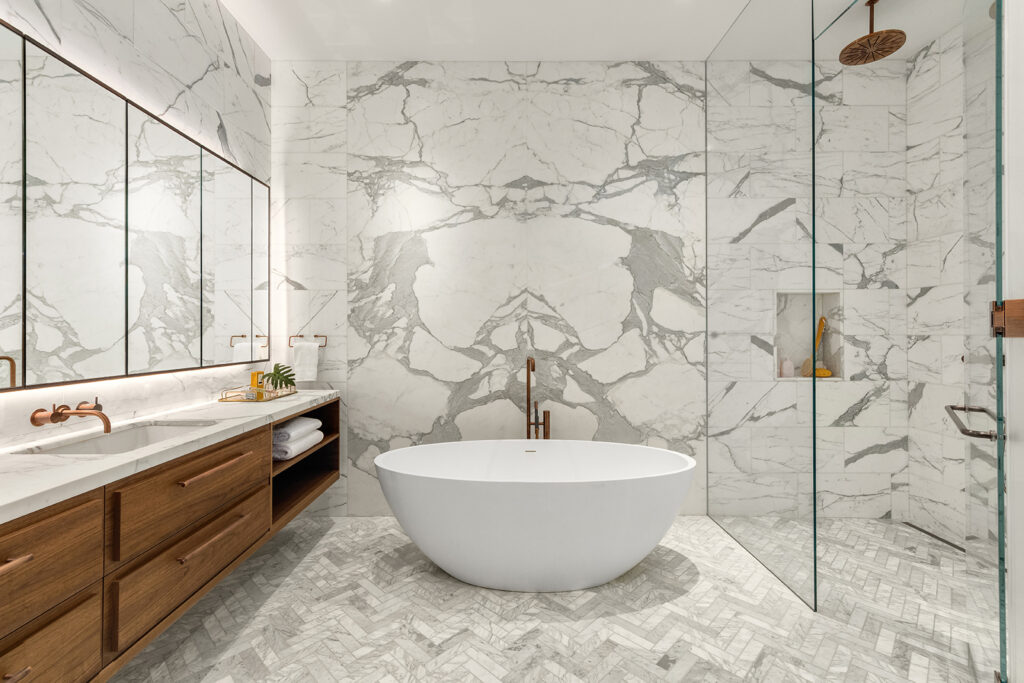
Free material samples and tub templates

Baths provide a unique opportunity to relieve stress and soothe your body. Bath recipes are designed to promote health benefits
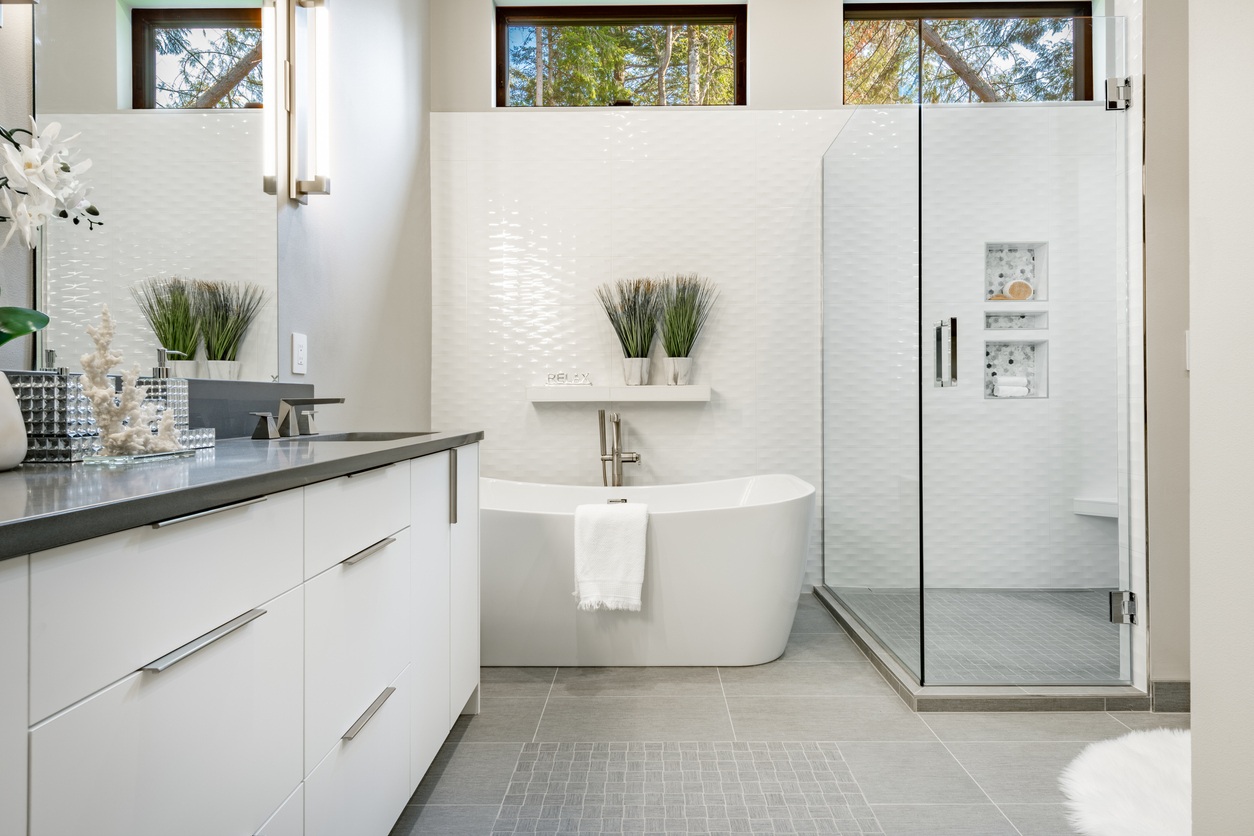
Florida homeowners considering a bathroom remodel in 2025 face a unique mix of climate considerations, building codes and regional price
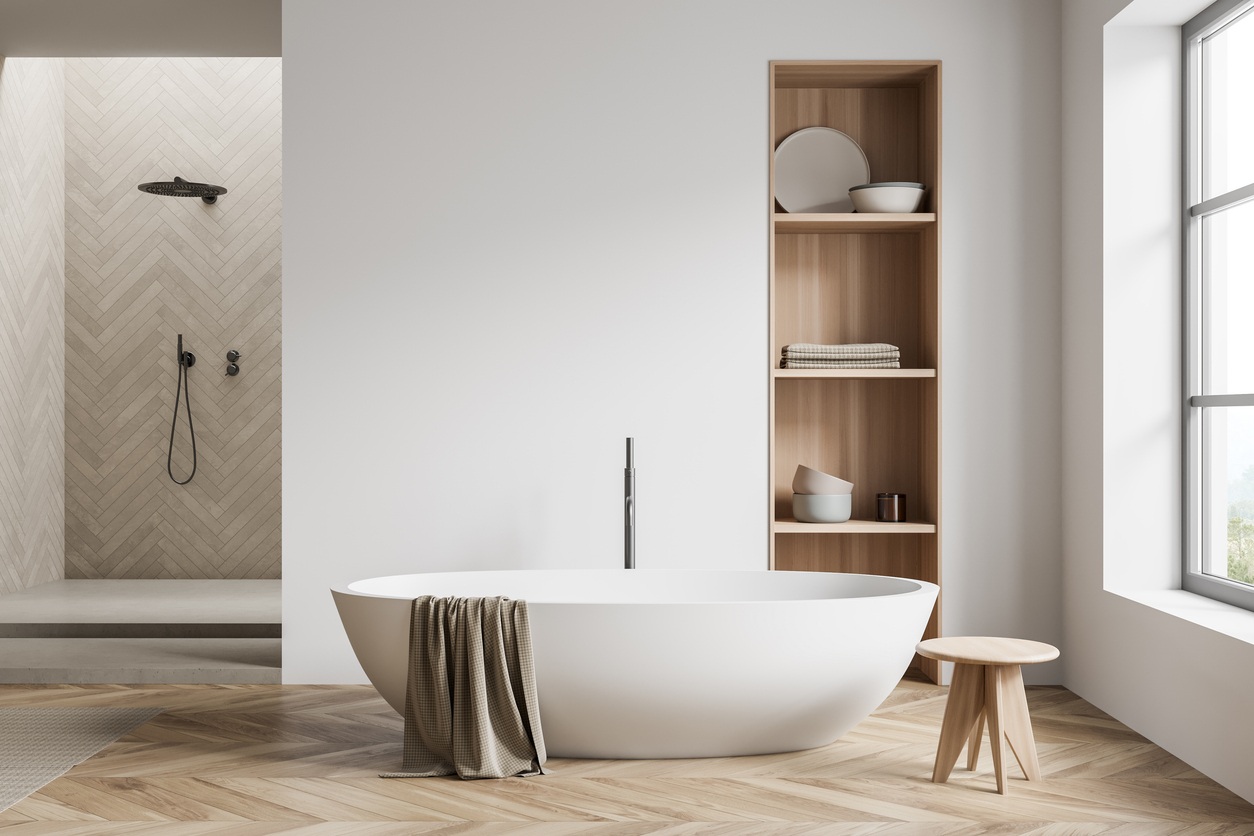
Remodeling a bathroom in New York can transform an outdated space into a modern retreat while adding value to your
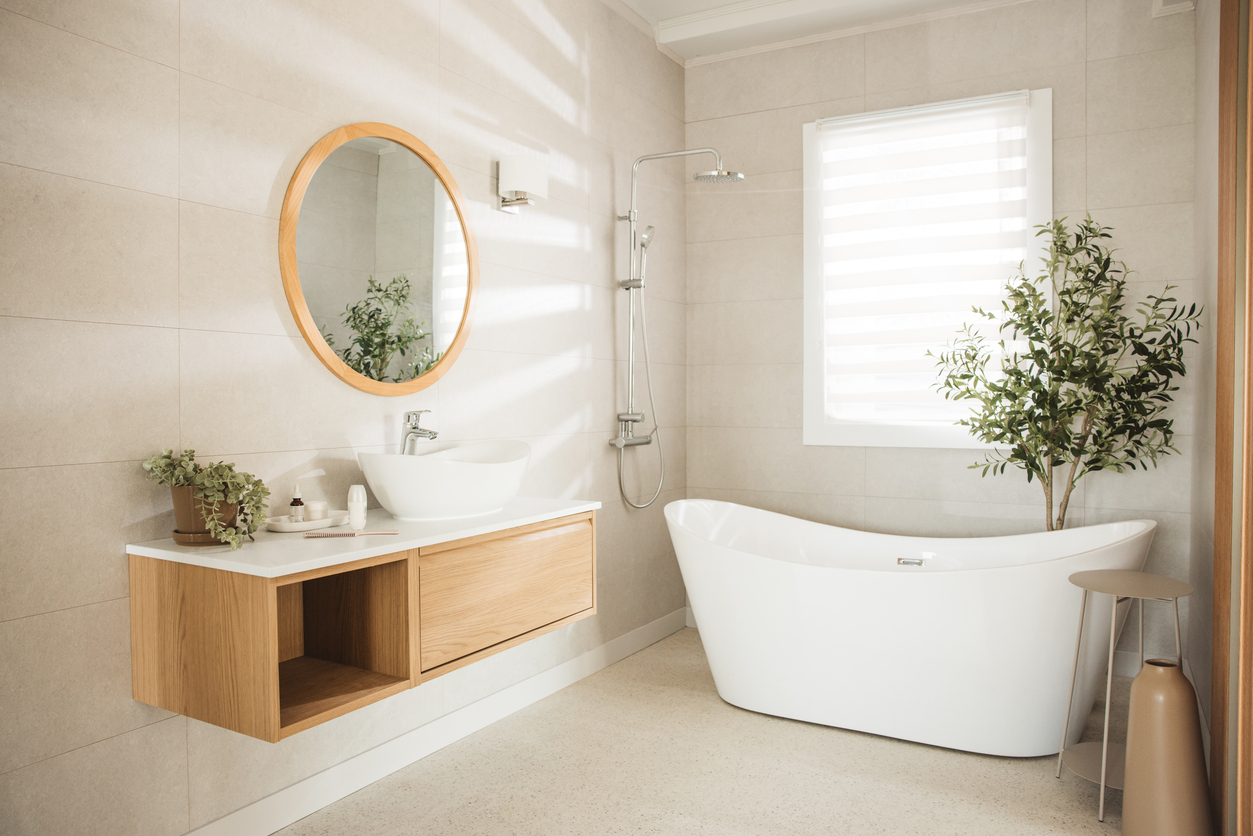
Bathroom remodel costs in California continue to rise in 2025 due to elevated labor rates, increased material demand, and strict
"*" indicates required fields
"*" indicates required fields
Request your free material sample below. By submitting, you agree to receive occasional product updates and offers from Badeloft. Unsubscribe anytime.
"*" indicates required fields